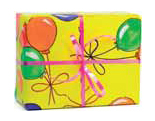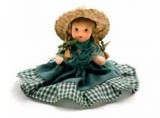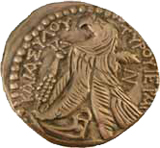Sue Cowley shares four ways to put pupils in a positive frame of mind for learning...
 1. Pass the parcel
1. Pass the parcel
• Find an object that connects to the topic of your lesson, for instance a firework if the class is studying the Gunpowder Plot.
• Now wrap up the object with several layers, just like in pass the parcel. As you wrap the parcel, write a clue on each layer of the wrapping paper.
• For instance, for the firework you could write: ‘I go bang!’, then ‘I light up the sky’, then ‘remember, remember, the 5th of November’, then ‘Guy Fawkes’.
• Sit the class in a circle and play the game of pass the parcel. As you unwrap each layer, the children should use the clue to talk about what the object inside might be.
• As an extension, the children could create historical pass the parcels of their own.
 2.Time capsule
2.Time capsule
• Give a quick explanation to the class about what time capsules are.
• Ask each child or group to decide on five objects they would put into their time capsule. These items should represent who they are, where they live, or say something about what is important in their lives.
• You can adapt this activity for younger or less able students, by offering a selection of suitable items. Ask the children to pick out the five objects that would best represent them in a time capsule, and to say why they’ve picked these ones.
• To extend this activity, you could create and bury a time capsule in the school grounds with your class.
 3. Eye witness account
3. Eye witness account
This starter activity is great for a lesson on the reliability of eye witness accounts.
• Begin the lesson by talking to the children about eye witnesses - do they always ‘see’ everything, why might different people tell different versions of the same event?
• While you’re talking about this with the class, arrange for someone to come into your room - choose someone that the children don’t know very well.
• The person should run in and start a loud argument with you, argue for thirty seconds, and then run out looking furious.
• Now ask your shocked class to write an eye witness account of what they just saw. What did the person look like? What did they say? What colour clothes were they wearing?
• Once the children have written their accounts, compare notes to show how eye witnesses will focus on different aspects of an event.
 4. Odd one out
4. Odd one out
• Put five pictures up on the board, four of which are related to the topic you’ve been studying, one which is not.
• Ask the children to talk in groups and decide which is the ‘odd one out’.
• Get volunteers to come up to the front and say which picture they chose and why.
• For added interest, choose five pictures which are all related to the topic in different ways. This will push the children to think harder about their choice of ‘odd one out’ and the reasons for that decision.
• For instance, when studying the Romans, you might show the class pictures of a chariot, a Roman coin, a mosaic, a Roman villa and a modern Roman road.
• You can also do this activity using five words associated with the topic.
Boosting children’s self esteem
Ace-Classroom-Support
